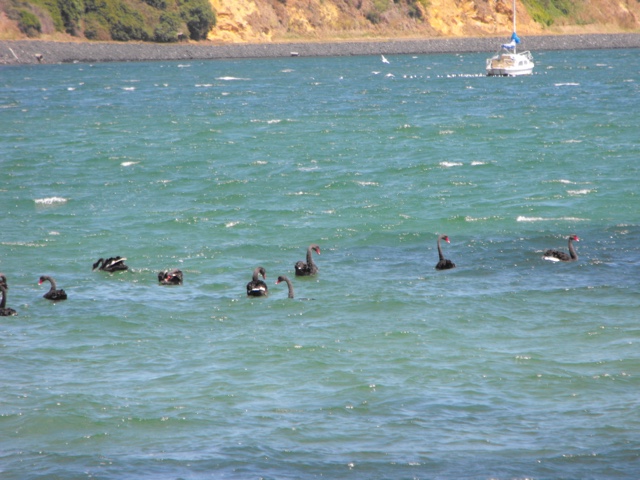As expected, we did indeed spend several hours at both the Dunedin Public Art Gallery and the Otago Settlers' Museum, both splendid institutions and very impressive for this size of city (population 127,500 in 2013...isn't Google wonderful!) Dunedin feels very British, in fact its name is a corruption of the Gaelic for Edinburgh. The first European settlers were Scots in the late 1840s. The street names are very British...Cumberland, Victoria, York, London...and just like Edinburgh, Princes Street runs through the town centre. Our motel (a very modern set of small townhouses) was on George Street, amidst some very Victorian-looking semi-detached houses.
The relationship with Europe and Britain in particular was evident in the works from the gallery's permanent collection...Turner, Monet, Constable, Tissot to name a few. The gallery got its start in the 1920s with a significant bequest from the Sargood family in memory of their only son/ brother who was killed at Gallipoli. (As a side note, 2015 was the 100th anniversary of the routing of ANZAC troupes so many NZ museums have mounted some kind of commemoration.) The family donated most of their personal collection to the gallery, and one of the most memorable works was by an Argentinian (name I can't recall!) The Sargood grandchildren and great grandchildren are still involved which speaks to their long term commitment.
The absolute highlight of our time in Dunedin was a visit to the Royal Albatross Centre where these fabulous birds have been researched and protected for over 70 years. http://albatross.org.nz/ Go to this website and watch the video to see these magnificent birds soaring in the wind. We took the very informative tour and got to see three birds sitting on nests, and one "teenager" taking to the skies.
This is the only place in the world where Albatross lay their eggs so close to humans. Other known colonies are in remote islands. These are Northern Royal Albatross, and they spend most of their lives at sea, feeding on squid and octopus. These particular birds circumnavigate the globe between Australia, NZ, South Africa and Antarctica before returning to this place to breed every other year. They normally mate for life, but have been known to "divorce" or be "widowed" and "remarry" (this is a well-studied colony!) Interestingly, the male returns first and starts building the nest. Mating takes place in October, and an egg is laid in November. The parents share the incubation over the next 11 weeks...one bird stays to incubate while the other fishes out at sea, and this might be as long as a few weeks. Hatching occurs over three days in February and the parents continue to take turns feeding and guarding the chick for the next month or so. They gradually start to leave the chick on its own until September when it finally fledges and then they all leave separately to spend the next year at sea. It seems that they lead a very solitary existence at sea, and the socializing happens on land during the breeding season.
The albatross wing span is over three metres. Here is Lloyd comparing his wingspan.
We were also close to red-billed gulls and their young chicks. These birds are in fact more at risk than the albatross because of predation by other kinds of gulls.
Cormorants were nesting nearby too.
The wind was so powerful that we couldn't walk comfortably down to the sea shore!
But not too far away, the surfers were enjoying themselves!









No comments:
Post a Comment